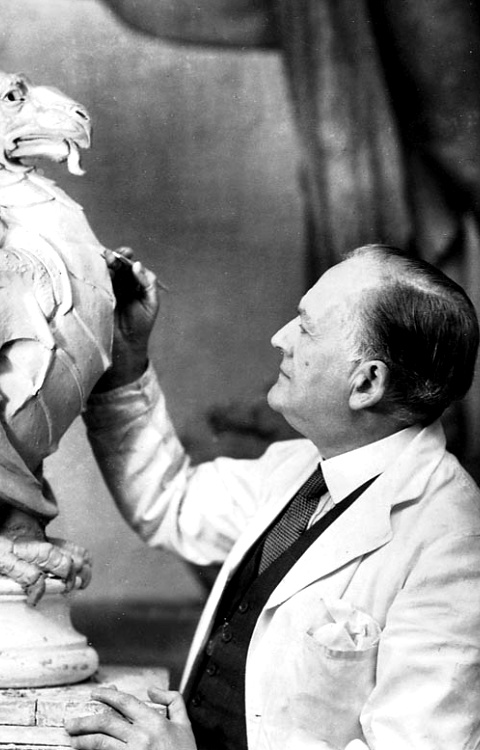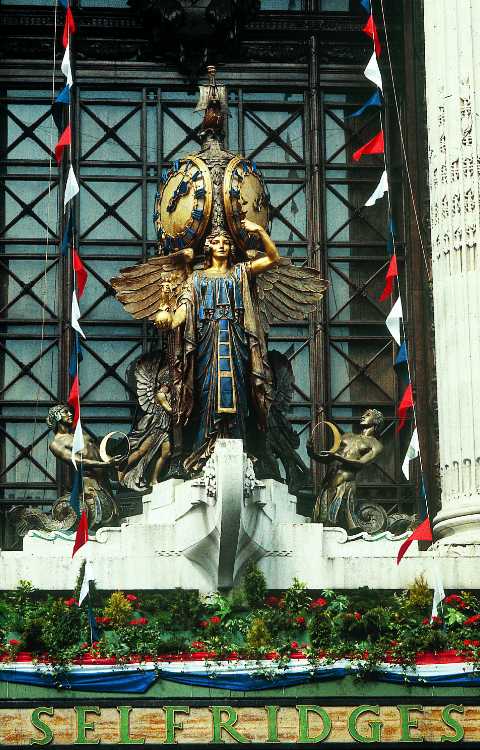Bayes and the Arts and Crafts Movement
The end of the nineteenth century marked a developing enthusiasm for the Arts and Crafts movement.
Gilbert Bayes had a strong belief that the artist should serve the community and serve it well. He was certainly interested in the applied arts and between 1890 and 1900 he produced large numbers of low relief plaque and panels in wax and plaster. In the oak cabinet he exhibited in 1910 he showed how panels in wax plaster as well as electrolysed and beaten metal, amongst other materials could be incorporated into furniture. He produced a wax model for a door handle in 1889 and continued with hand and standing mirrors, doorplates and furniture as well as a cabinet. He worked in plaster, wood, copper, bronze and silver and in enamels.








